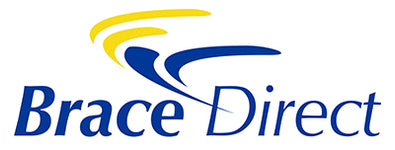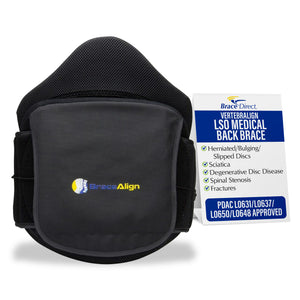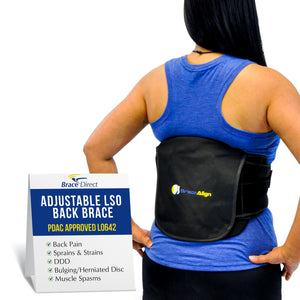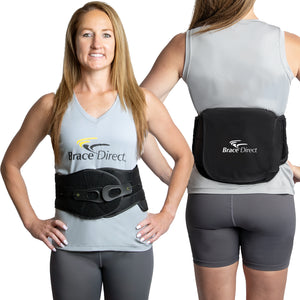
Top 5 Tips for Choosing a Medical‑Grade Lower Back Brace
If you’ve ever dealt with lower back pain, you know how much it can interfere with daily life. Whether you’re recovering from surgery, managing a herniated disc, or simply struggling to sit or stand comfortably, a high-quality medical back brace can make a big difference. But not all braces are the same. Choosing the right one means understanding your condition, and what features to look for.
Here are five expert-approved tips to help you choose the best medical-grade lower back brace for lasting relief and safe recovery.
Know Your Pain Type
Not all lower back pain is the same. Some issues are structural, like a herniated disc or degenerative disc disease, while others come from muscle strain or nerve irritation like sciatica. Your diagnosis should guide your brace choice.
For example, if you’re dealing with a bulging disc or post-surgical recovery, a PDAC-approved LSO brace like the Brace Align VertebrAlign LSO Back Brace offers rigid support and proper spinal alignment. For milder conditions, the Brace Direct Lower Back Support Brace may offer enough compression and flexibility.
Look for PDAC Codes
PDAC approval (like L0650 or L0642) means a brace meets strict Medicare standards and qualifies as durable medical equipment. This is especially important if you’re post-operative or have chronic spine issues.
The Brace Align Adjustable LSO Back Brace (L0642) is a great option for medically-backed support. It’s PDAC-approved and built to help with conditions like degenerative disc disease or severe sciatica.
Prioritize Adjustability and Fit
The best brace is one you’ll actually wear, and that means it needs to fit well. Many braces offer adjustable pulley systems, removable panels, and expandable sizing. These features let you customize your compression and adapt as your body changes during recovery.
For example, the Brace Align VertebrAlign LSO includes a dual-pulley system and expandable sizing (23–50", up to 66"). This ensures both a snug fit and ease of use even as swelling goes down or mobility improves.
Match the Brace to Your Activity Level
If you’re more mobile, a lighter brace with breathable materials may work better. But if you’re in post-surgical recovery or need firm support, go for rigid panel braces. Don’t forget that some braces are sleek enough to wear under clothing for all-day use.
The Brace Direct Lower Back Support Brace offers a balance of comfort and support, ideal for everyday tasks, work, or walking. For more intensive use, like after spinal surgery, the VertebrAlign LSO gives firmer support and multi-point control.
Consider Your Recovery Timeline
Some back conditions improve in weeks, others take months. Choose a brace that can evolve with your recovery. Models with removable stays or interchangeable panels let you adjust the support level over time.
For example, the Brace Align Adjustable LSO allows step-down support, ideal if your doctor plans to wean you off bracing gradually. That’s not just more cost-effective, it’s better for long-term healing.
Find the Right Support for Your Back
A lower back brace can offer real relief and speed up recovery, but only if it’s the right one for your condition, lifestyle, and needs. Look for medical-grade features like PDAC coding, adjustability, and proper sizing to ensure you're getting the support your spine deserves.







